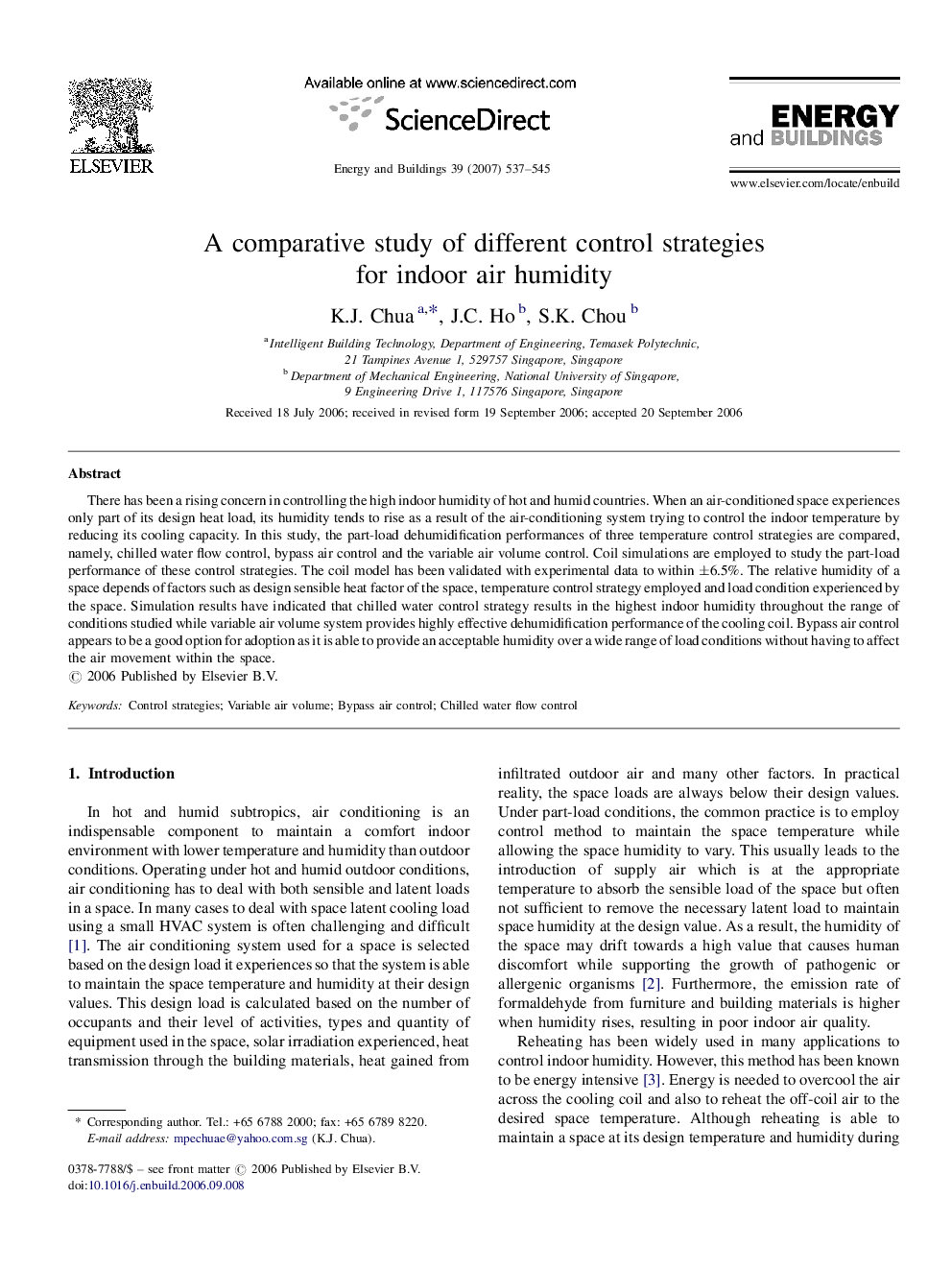| کد مقاله | کد نشریه | سال انتشار | مقاله انگلیسی | نسخه تمام متن |
|---|---|---|---|---|
| 264793 | 504114 | 2007 | 9 صفحه PDF | دانلود رایگان |

There has been a rising concern in controlling the high indoor humidity of hot and humid countries. When an air-conditioned space experiences only part of its design heat load, its humidity tends to rise as a result of the air-conditioning system trying to control the indoor temperature by reducing its cooling capacity. In this study, the part-load dehumidification performances of three temperature control strategies are compared, namely, chilled water flow control, bypass air control and the variable air volume control. Coil simulations are employed to study the part-load performance of these control strategies. The coil model has been validated with experimental data to within ±6.5%. The relative humidity of a space depends of factors such as design sensible heat factor of the space, temperature control strategy employed and load condition experienced by the space. Simulation results have indicated that chilled water control strategy results in the highest indoor humidity throughout the range of conditions studied while variable air volume system provides highly effective dehumidification performance of the cooling coil. Bypass air control appears to be a good option for adoption as it is able to provide an acceptable humidity over a wide range of load conditions without having to affect the air movement within the space.
Journal: Energy and Buildings - Volume 39, Issue 5, May 2007, Pages 537–545